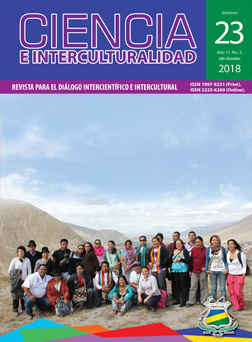Communicative potential of the Inti Raymi in the Tola Chica Commune, Kara Kitu People, Kichwa Nationality – Ecuador
DOI:
https://doi.org/10.5377/rci.v23i2.6579Keywords:
Inti raymi, Festivity, Celebration, Commune, People, Signos, Codes, Symbol, CommunicationAbstract
This article analyzes the communicative potential of the codes and symbols of the “Inti Raymi” in the Tola Chica Commune, Kara Kitu People, Kichwa Nationality in Ecuador, and it seeks to be a contribution to the communicative and cultural strengthening of this community, in the context of their local and national interaction. The study was guided by the “Relational Symbolic Living Method”, in the CCRISAC context, whose transcendence has expression in the experience and knowledge in and with the community, the recovery and re-enchantment with the process; to signify and resignify from the oral memory the festivity as a cultural legacy. Finally, the communication potential of the festival is determined, highlighting the interaction of the town council from the planning to the start of the celebration, with the community people; the festivity as a meeting point for diverse social actors; the convocation potential and the festivity representativeness in the sector.Downloads
Download data is not yet available.
Abstract
1471
1471
PDF (Español (España)) 1025
HTML (Español (España)) 303
EPUB (Español (España)) 161
Resumen (Audio) (Español (España)) 142
Abstract (Audio) 164
HTML (Español (España)) 303
EPUB (Español (España)) 161
Resumen (Audio) (Español (España)) 142
Abstract (Audio) 164
Downloads
Published
2018-10-22
How to Cite
Simbaña, G., & Yantalema, B. (2018). Communicative potential of the Inti Raymi in the Tola Chica Commune, Kara Kitu People, Kichwa Nationality – Ecuador. Ciencia E Interculturalidad, 23(2), 224–240. https://doi.org/10.5377/rci.v23i2.6579
Issue
Section
Gender and Interculture
License
Copyright © (URACCAN)

This journal is licensed under a Creative Commons Attribution-NonCommercial-NoDerivatives 4.0 International License.
This license allows others to download the works and share them with others, as long as their authorship is acknowledged, but they can not be changed in any way nor can they be used commercially.




